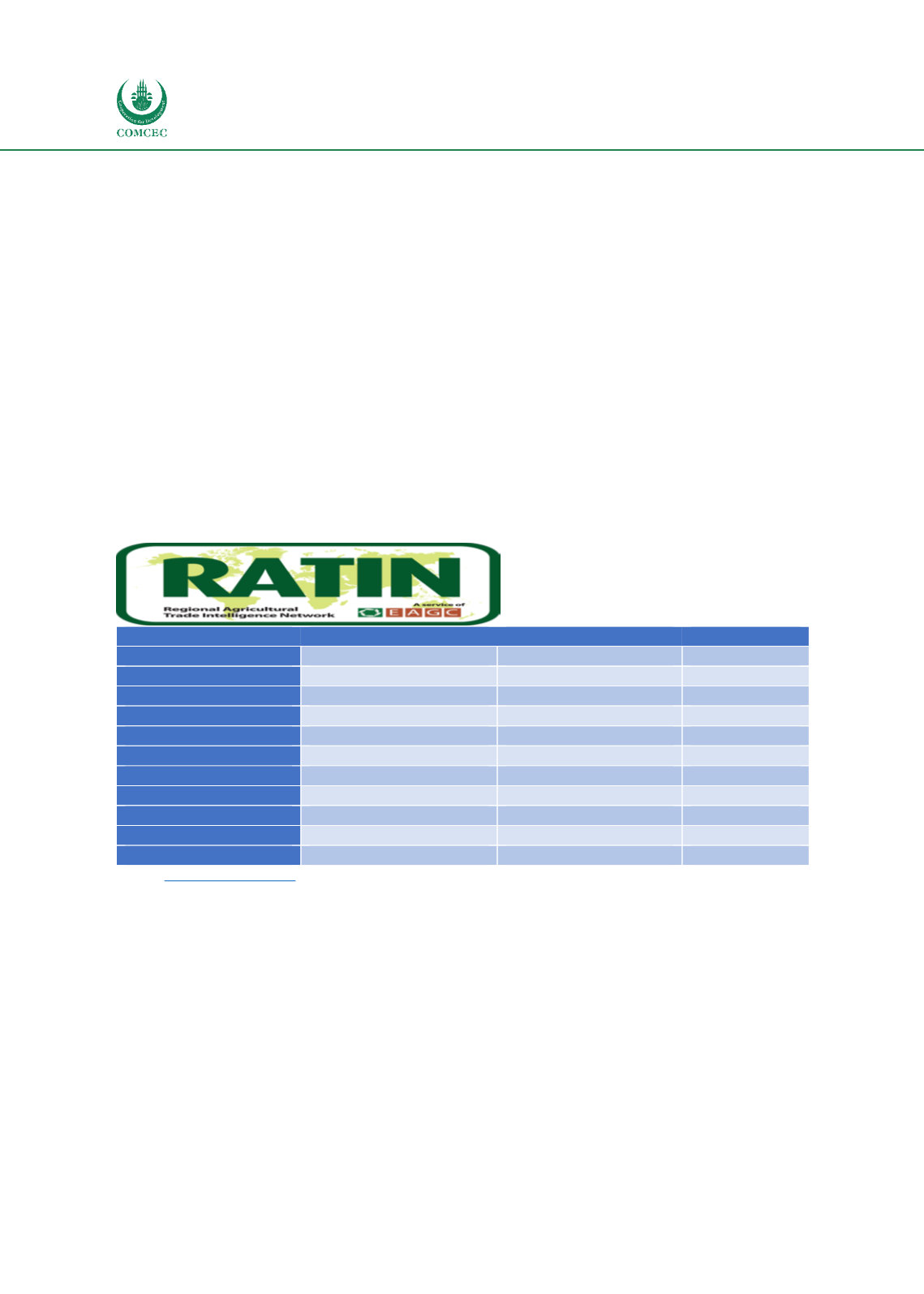

Improving Agricultural Market Performance:
Developing Agricultural Market Information Systems
100
commodities across the borders in Eastern Africa, including data on informal cross-border trade
volumes. The information is disseminated through its website, emails and via mobile phones.
The information provided is intended to
promote grain trade in Eastern Africa. The expectation
is that reporting price differentiates across regional markets (see Table 12), will encourage
EAGC members, most of whom are grain traders and processors, to exploit arbitrage
opportunities in the regional grains markets.
There are, however, interpretation difficulties for users. First, maize prices are reported in
Kenyan Shillings (KES) per bag of 90 kilogrammes. This is the standard weight per bag of maize
in Kenya but it is not uniformly applied across the region. It applies in Tanzania but not in
Uganda, where MIS providers usually report prices on per kilogramme basis. Furthermore,
users have to convert prices into local currency but the network does not report exchange rates
for the day. The prices quoted do not distinguish between different grades of maize, despite the
fact that Eastern Africa has adopted harmonised grades for maize and other major staples as
part of measures to promote unhindered regional trade in grains. Locational differences in price
as reported tend to be meaningless if not translated into localised export parity prices, but this
form of analysis of prices is missing.
Table 12: RATIN Maize Prices in Eastern African Cities (KES/90kg) on 18
th
December 2017
Country
Market town/city
Wholesale price
Retail price
Kenya
Mombasa
2,790.00
4,500.00
Nairobi
3,780.00
4,320.00
Uganda
Busia
1,961.00
2,305.00
Masindi
1,663.00
1,791.00
Kampala
1,919.00
2,559.00
Tanzania
Iringa
1,854.00
2,060.00
Dar es Salaam
2,883.00
4,119.00
Rwanda
Ruhengeri
2,751.00
3,301.00
Kamembe
3,837.00
4,385.00
Rubavu
3,289.00
4,166.00
South Sudan
Juba
4,592.00
5,299.00
Source
: http://www.ratin.net7.3.2
FEWSNET: AN INTERNATIONAL INFORMATION SYSTEM USED IN
UGANDA
The Famine Early Warning Systems Network collects and disseminates information which
provides, especially policymakers, early warning on food supply and insecurity at regional and
national levels. It was created in 1985 by the USAID and runs in several African countries
including Uganda. The FEWSNET reports provide an evidence basis for planning responses to
food crisis at regional and national levels and includes information on the following: m
onthly
reports and maps detailing current and projected food insecurity; timely alerts on emerging or
likely crises; and specialized reports on weather, markets and trade, agricultural production,
livelihoods, nutrition, and food assistance.


















